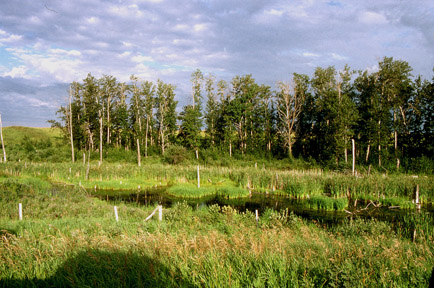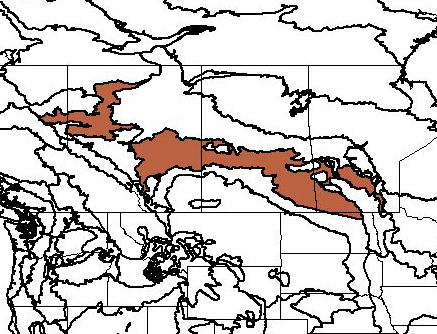
Wetlands, west of Edmonton, Alberta (c) 2005 Scott and Ruth Bassett
Bioimages home (click on an image to enlarge)
view
this page in its intended navigation context
Canadian Aspen forests and parklands
(WWF
ecoregion NA0802)

Wetlands, west of Edmonton, Alberta
(c)
2005 Scott and
Ruth Bassett

Source of bioregions data:
Olson, D. M. and
E. Dinerstein. The Global 200: Priority ecoregions for global conservation. (PDF
file) Annals of the Missouri Botanical Garden 89:125-126.
Distinctiveness (1=highest,4=lowest): 4
(nationally important)
This is the largest boreal-grassland transition in the world and has some of the
most extensive waterfowl breeding habitat.*
Conservation Status (1=most endangered, 5=most
intact): 1 (critical)
Less than 10% of the habitat in this region remains intact. Conversion to
agricultural cropland and grazing is responsible for most of the habitat loss.*
 | Populus tremuloides | (quaking aspen) |
Populus balsamifera (balsam poplar)
 Picea glauca (white spruce)
Picea glauca (white spruce)
 Picea mariana (black spruce)
(c) 2004 Maurice J. Kaufmann
Picea mariana (black spruce)
(c) 2004 Maurice J. Kaufmann
Larix laricina (tamarack)
* Ricketts, T.H., E. Dinerstein, D.M. Olson, C.J. Loucks, et al. (1999) Terrestrial Ecoregions of North America: A Conservation Assessment. World Wildlife Fund - United States and Canada. Island Press, Washington, D.C. pp. 280-282.
Except as noted, images copyright 2002-2005 Steve Baskauf - Terms of use